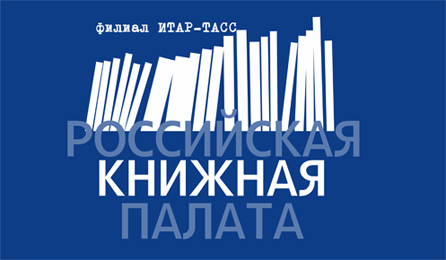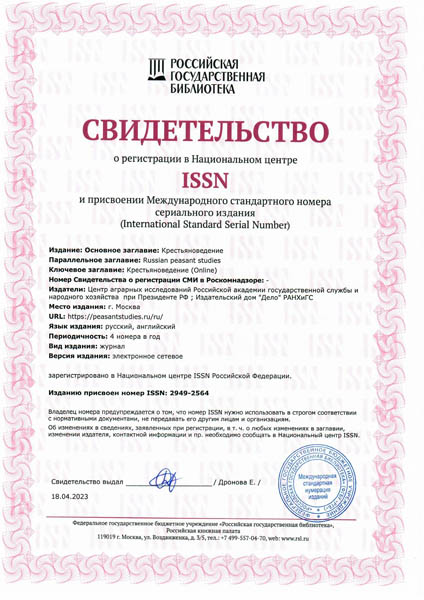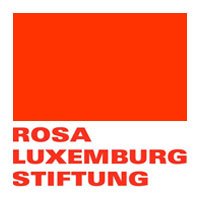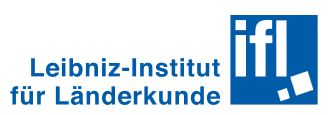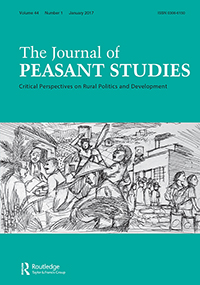Kisliy O. A., Isaeva M. A. The position of labor migrants in agriculture under the pandemic // The Russian Peasant Studies. 2021. V.6. №4. P. 125-135.
DOI: 10.22394/2500-1809-2021-6-4-125-135
Annotation
Many countries face a shortage of labor resources and try to provide agricultural employment by attracting labor migrants from abroad. A ‘review’ of the role of labor migration in the development of agriculture requires a thorough analysis of migration statistics, since illegal migration is widespread, and there are no statistical records on seasonal workers. Therefore, migrants seem to make up an insignificant part of those employed in agriculture. However, the current global situation —the coronavirus pandemic—revealed a shortage of workplaces for labor migrants. In the pre-pandemic period, millions of foreign workers entered the Russian Federation every year. Under the pandemic, to attract migrants to agriculture and food production system of other countries became difficult, which highlighted their important role in the economic development. Therefore, the impact of the pandemic on the foreign labor market entered the agenda of international politics and measures to combat the covid-19 that limited migration, thus, determining a shortage of workers in agriculture and the underestimation of their contribution to national economies of other countries.
Keywords
Migration processes, migration policy, pandemic, covid-19, agriculture, national economy, labor migrants, foreign labor force, labor migration.
About the authors
Kisliy Oleg A., PhD (Pedagogy), Assistant Professor, Russian Presidential Academy of National Economy and Public Administration; Prosp. Vernadskogo, 82 Moscow, 119571.
E-mail: This email address is being protected from spambots. You need JavaScript enabled to view it.
Isaeva Maria A., Officer, Division for Control in the Field of Migration, Main Directorate, Russian Ministry of Internal Affairs, Moscow 115035, Sadovnicheskaya St., 63, bldg. 7.
E-mail: This email address is being protected from spambots. You need JavaScript enabled to view it.
Zverev V.V. To the anniversary of the half-forgotten book (V.P. Vorontsov’s Peasant Community) // The Russian Peasant Studies. 2021. V.6. №2. P. 6-44.
DOI: 10.22394/2500-1809-2021-6-2-6-44
Annotation
The article considers the main ideas of the outstanding Russian economist and publicist V.P. Vorontsov as represented in his work Peasant Community published in 1892. This book provides a detailed examination of the zemstvo statistical data in order to refute the theory of the rudimentary nature of the peasant community. To prove his ideas, Vorontsov used the objectivist approach in the selection and presentation of the data. He showed that in the post-reform era, the peasant community not only kept its functions of protecting the rural world but also developed new means for implementing the principles of equality and justice and for adapting peasants to the market economy. The peasant community resisted the commodity-money relations, but this resistance was not always effective. There was a growing individualistic trend which threatened to destroy the community organization. Vorontsov focused on the distribution-production functions of the peasant community rather than on its financial-tax, law-making, judicial functions and methods of social protection, and did not consider its representative, police, cultural-educational, religious functions or the contradictions between the communal nature of land relations and the individual economic practices of the peasantry. Vorontsov’s book is a real encyclopedia of the activities and worldview of the Russian peasantry in the second half of the 19th century.
Keywords
V.P. Vorontsov, peasant community, land redistribution, individualism of the peasantry, communal and household land tenure, agriculture.
About the author
Zverev Vasily V., DSc (History), Senior Researcher, Institute of Russian History of the Russian Academy of Sciences. 117292, Moscow, Dmitry Ulyanov St., 19.
E-mail: This email address is being protected from spambots. You need JavaScript enabled to view it.
Nefedova T.G. Polarization of the social-economic space and prospects of rural areas in the old-developed regions of Central Russia // The Russian Peasant Studies. 2021. V.6. №1. P. 126-153.
DOI: 10.22394/2500-1809-2021-6-1-126-153
Annotation
The article is based on the presentation made on March 11, 2021 at the scientific seminar of the Chayanov Research Center and the Center for Agrarian Studies of the RANEPA. The presentation summarized publications based on the research supported by the Russian Science Foundation (project No. 19-17-00174 “Development of the old-developed regions under the social-economic polarization and the reduction of the developed space of European Russia”). The research aimed at identifying challenges and consequences of the Russian spatial polarization for rural areas at different levels – from regional to local – on the example of Central Russia (including the Moscow Region and its neighboring regions). The author considers features of rural areas in Central Russia, describes trends of their development and consequences of the longterm rural depopulation which was especially strong around the Moscow Region. The author focuses on different types of migration (interregional, intraregional and international) and their reasons; identifies centers of the contemporary population concentration; describes the transformation of agriculture in these regions, its organizational and spatial changes, the main trends in the decline and revival of agricultural production and its impact on rural settlement; proves that the polarization of rural areas affects all levels – regions, municipal districts and settlements. The article is based on the integrated approach that considers rural areas in their interaction with cities: the influence of urban investments on the development of rural areas, the increasing concentration of the rural population in the suburbs, the role of summer residents in the redevelopment of rural areas and in the preservation of rural settlements. Finally, the author assesses the consequences of the authorities’ decisions for rural areas.
Keywords
Old-developed regions, cities, rural areas, agriculture, population migration, land use, summer residents.
About the author
Nefedova Tatyana G., DSc (Geography), Chief Researcher, Institute of Geography, Russian Academy of Sciences. 119017, Moscow, Staromonetny per., 29.
E-mail: This email address is being protected from spambots. You need JavaScript enabled to view it.
Lisichkin G.S., Pugacheva M.G., Yarmolyuk S.F. “I wanted to draw the society’s attention to agriculture” // The Russian Peasant Studies. 2020. V.5. №2. P. 159-174.
DOI: 10.22394/2500-1809-2020-5-2-159-174
Annotation
This interview with Gennady Stepanovich Lisichkin was taken on February 1, 1999 for the book Press in Society (1959-2000). Estimates of Journalists and Sociologists. Documents. We believe that the biography of this famous scholar and publicist, which is closely related to the development of agriculture in the USSR in the 1950-1970s, will be interesting to the readers of the Russian Peasant Studies. In 1953, after graduating from the MGIMO University and working at the Ministry of Foreign Affairs, Gennady Stepanovich voluntarily went to Kazakhstan and was the head of the collective farm for three years. Later he worked at the USSR Embassy in Yugoslavia, as an editor of the department in the Izvestia and as an economic observer in the Pravda. He was an involuntary initiator of the public discussion on the economic challenges of agricultural production in the central press in the 1960s (a selection of documents from the Russian State Archive of Contemporary History was published in the section “Beyond the Economic Discussion in the Press”).
Keywords
agriculture, virgin lands development, Germans in Kazakhstan, market socialism, Izvestia, economic discussion
About the authors
Lisichkin Gennady S., DSc (Economics), Senior Researcher, Institute of Economics of the Russian Academy of Sciences
Pugacheva Marina G., Senior Researcher, Center for Fundamental Sociology, National Research University Higher School of Economics. Myasnitskaya St., 20, Moscow, 101000.
E-mail: This email address is being protected from spambots. You need JavaScript enabled to view it.
Yarmolyuk Svetlana F. (1936-1917), PhD (Economics), Head of the project, Institute of Sociology of the Russian Academy of Sciences
Gusakov T.Yu. Rural Crimea and its agroholdings // The Russian Peasant Studies. 2020. V.5. №2. P. 106-129.
DOI: 10.22394/2500-1809-2020-5-2-106-129
Annotation
The increase in number of agroholdings in the Russian regions changes the paths of rural development and attracts the scientific interest to interaction of business groups with the authorities and local communities. Concentration of agricultural production in the hands of large companies has regional peculiarities determined by the level of integration: there are regions with a high share of holdings in the structure of agricultural production (for example, the Belgorod and Voronezh Regions) and, on the contrary, regions with a high share of agricultural production in households (Dagestan, Crimea, Tuva). The article considers the Republic of Crimea as a participant of the emerging holding structure of the agricultural production, but the increase in the share of agricultural enterprises is accompanied by the dominance of the informal household economy. The author also considers the influence of agroholdings on the development of rural territories and agricultural production on the example of the largest Crimean producer of agricultural products.
Keywords
agriculture, rural area, agroholding, rural development, integrated business group, Republic of Crimea
About the author
Gusakov Timur Yu., Junior Researcher, Center for Agrarian Studies, Russian Presidential Academy of National Economy and Public Administration. Vernadskogo Prosp., 82, Moscow, 119571.
E-mail: This email address is being protected from spambots. You need JavaScript enabled to view it.
Gusakov T.Yu. The multistructure of the contemporary ethnic region in Russia: Archaization, agrarianization and migration (on the example of the Republic of Tyva) // The Russian Peasant Studies. 2019. V.4. №4. P. 76-95.
DOI: 10.22394/2500-1809-2019-4-4-76-95
Annotation
The article considers the features of the contemporary rural development of the Russian ethnic region on the example of the Republic of Tyva. In 2017, according to the official statistics, it was the poorest Russian region by the share of the rural population below the poverty line. This situation was determined by a number of factors exacerbating Tuva’s economic depression: its being a periphery and its remoteness from economic centers, stagnation and impossibility to revitalize the industrial complex, destruction of the agricultural sector, a high share of the shadow economy, and so on. The reason for the economic stagnation is the agrarian path of Tyva chosen by the regional elites, which consists of the support for small archaic agricultural production as an ethnic type of activity. The article describes the vectors of the contemporary rural development of the Republic of Tyva, its economic and ethnic-social features, and changes determined by the large transfers from the federal budget to the regional economy. Today, there is spatial polarization and rural depopulation in the depressed agrarian regions, and the cities remain the main centers of population concentration (mainly the city of Kyzyl).
Keywords
agriculture, rural settlement, ethnic region, migration, spatial mobility, Republic of Tyva
About the author
Gusakov Timur Yu., Junior Researcher, Center for Agrarian Studies, Russian Presidential Academy of National Economy and Public Administration. 119571, Moscow, Vernadskogo Prosp., 82.
E-mail: This email address is being protected from spambots. You need JavaScript enabled to view it.
Andreenkov S.N. Reforms in the economies’ system and land use in the Novosibirsk Region in the 1990s // The Russian Peasant Studies. 2019. V.4. №4. P. 58-75.
DOI: 10.22394/2500-1809-2019-4-4-58-75
Annotation
The article considers the features of reorganization of agricultural enterprises and land use system in the Novosibirsk Region in the 1990s. This reform was the main direction of the agrarian transformations in the 1990s. The author identifies the logic and consequences of the collective and state farms transformation into various forms of commercial enterprises (joint-stock companies, cooperatives, peasant farms and their associations) and features of the land redistribution. At the first stage of the reform (1991), the collective and state farm system of the Novosibirsk Region did not change, new forms of farms and land use just started to develop, and the size of subsidiary plots significantly increased. At the second stage of the reform (1992–1993), the reorganization of collective and state farms accelerated, a network of large commercial enterprises developed, and the number of peasant farms increased. However, the new organizational-economic system met the market economy standards only formally. The new agricultural jointstock companies and cooperatives did not differ much from their predecessors—collective and state farms. Large farms remained the main supplier of agricultural products on the market although they worked in extremely unfavorable conditions. Nevertheless, the role of small economies represented by peasant farms also increased.
Keywords
land reform, collective farms, state farms, agriculture, land use, Novosibirsk Region
About the author
Andreenkov Sergey N., PhD (History), Senior Researcher, Sector of Agrarian History, Institute of History, Siberian Branch of the Russian Academy of Sciences. 630090, Novosibirsk, Akademika Nikolaeva St., 8.
E-mail: This email address is being protected from spambots. You need JavaScript enabled to view it.
Il'inykh V.A. Organization of the agronomic services in Siberia in the 1920s: Discourse and choice // The Russian Peasant Studies. 2019. V.4. №2. P. 83-107.
DOI: 10.22394/2500-1809-2019-4-2-83-107
Annotation
The article presents the expert discourse on the optimal structure of the agricultural network in Siberia in the 1920s and its institutionalization in the agronomic services in the village. The author conducts his analysis taking into account the agrarian policy of the Soviet state and the ideological-theoretical struggle in the agrarian science; he also focuses on the views of A.V. Chayanov. Before the revolution, there were two systems of agronomic assistance in Russia. The state agricultural assistance was sectoral and was provided in large districts. The zemstvo (public) assistance was local and complex. In Siberia in the early 20th century, the state agronomy prevailed. After the establishment of the Soviet power in the region, the discussion began between supporters of the sectoral, local and district systems of the agricultural network. The People’s Commissariat of Agriculture recommended the widespread introduction of the local agricultural network; and there were also local experiments with other systems. In the mid1920s, under the administrative reform, the local-district system was chosen, but soon it was changed into the district one. The Soviet agronomic system developed under the NEP was largely based on the principles of pre-revolutionary social agronomy. The distinctive feature of the Soviet agricultural assistance was its nationalization. Theorists of the public agronomy positively evaluated this feature of the Soviet agricultural system, which, in their opinion, allowed efficient rationalization of the peasant economy. In the late 1920s, the USSR abandoned the basic principles of public agronomy and later eliminated the agronomic assistance system of the NEP period.
Keywords
agriculture, peasantry, land authorities, agronomic services, NEP, A.V. Chayanov
About the author
Il’inykh Vladimir A., DSc (History), Head of the Department of Agrarian History, Institute of History, Siberian Branch of the Russian Academy of Sciences. 630090, Novosibirsk, Akademika Nikolaeva St., 8. E-mail: This email address is being protected from spambots. You need JavaScript enabled to view it.
Makarov N.P. At the great crossroads. The comparative analysis of the evolution of agriculture in China, the United States of North America, the USSR, and Western Europe (Article of N.P. Makarov) // The Russian Peasant Studies. 2019. V.4. №1. P. 6-21.
DOI: 10.22394/2500-1809-2019-4-1-6-21
Abstract
This article published in the mid-1920s in the Peasant International was written by an outstanding Russian agrarian scientist and a prominent representative of the organization-production school Nikolai Pavlovich Makarov (1887–1980). It is quite strange that this article was not listed in the bibliographies of Makarov’s works although it is absolutely important for the understanding of the evolution of world agriculture in the 20th century. Moreover, the reader will see that in the second half of the 1920s the ideas of this article were developed in the works of other representatives of the organization-production school — A.V. Chayanov, G.S. Studensky, A.A. Rybnikov. As the title and the foreword of the article show, the author seeks to provide an analytical description of the main directions of the world agrarian evolution of the 1920s and its possible alternatives on the example of four main macro-regions of world agriculture: the USA, China, Western Europe and Russia. First the author focuses on the two so-called “poles” of agrarian development — the United States and China — and argues that “old” labor-intensive agrarian China and the “young” capital-intensive agrarian United States are the exact opposites of each other. It is between these poles that the paths of the agricultural evolution of most countries of the world, including Europe and Russia, are located. Makarov concludes with a preliminary diagnosis of the approaching “great agrarian crossroads” of world agriculture. The publication with comments was prepared by A.M. Nikulin.
Keywords
agriculture, USA, China, Western Europe, Russia, agrarian evolution, peasants, farmers
About the authors
Makarov Nikolai Pavlovich
Editor: Nikulin Alexander M., PhD (Economics), Head of the Center for Agrarian Studies, Russian Presidential Academy of National Economy and Public Administration; 119571, Moscow, Prosp. Vernadskogo, 82.
E-mail: This email address is being protected from spambots. You need JavaScript enabled to view it.
Round table “The 100th anniversary of the academician Alexander Alexandrovich Nikonov (1918–1995)”
Oct 19 2018Round table “The 100th anniversary of the academician Alexander Alexandrovich Nikonov (1918–1995)” // The Russian Peasant Studies. 2018. V.3. №3. P. 70-94.
DOI: 10.22394/2500-1809-2018-3-3-70-94
Annotation
The round table at the Center for Agrarian Studies of the Russian Presidential Academy of National Economy and Public Administration was dedicated to the 100th anniversary of the academician Alexander Alexandrovich Nikonov (1918–1995) and focused on the milestones of the biography of this prominent agrarian scientist, his intellectual and organizational contribution to the Russian agricultural science. A.A. Nikonov, a heroic participant of the Great Patriotic War, took part in the organization and development of agriculture in Latvia, the Stavropol Region and Moscow, held many senior positions from the Minister of Agriculture of Latvia to the President of the Lenin All-Union Academy of Agricultural Sciences, was known not only for outstanding organizational and intellectual but also personal qualities. The participants of the round table recognized the contribution of the academician Nikonov to the development of the agrarian reforms’ strategy in the USSR of the 1980s and to the creation in the years of perestroika of the Agrarian Institute — a scientific organization of a fundamentally new type, which is now named after the scientist — Nikonov VIAPI. The round-table discussions emphasized that A.A. Nikonov was not working in safe conditions, and scientific activities often demanded from him civil courage and political responsibility. It is to A.A. Nikonov that the Russian agrarian science should be grateful for the consistent desire to rehabilitate the names of A.V. Chayanov and his colleagues from the organization-production school and to re-introduce into scientific discourse the forbidden and forgotten heritage of these outstanding scientists. Finally, the discussions emphasized the importance of the last work of the scientist, his book The Spiral of the Century-Old Drama: Agrarian Science and Policy of Russia (18-20 centuries). The participants of the round table consider this book as a still unique and relevant guide for the scientific and moral search for the ways of decent rural development of Russia.
Keywords
A.A. Nikonov, Nikonov VIAPI (Alexander Nikonov All-Russian Institute of Agrarian Issues and Informatics), VASKhNIL (Lenin All-Union Academy of Agricultural Sciences), agrarian science, agrarian policy, agrarian reforms, agriculture, A.V. Chayanov’s school.
About the authors
Bakaev Vladimir V., DSc (Economics), Researcher, Alexander Nikonov All-Russian Institute of Agrarian Issues and Informatics; 105064, Moscow, Bolshoi Kharitonievski Per., 21–1.
E-mail: This email address is being protected from spambots. You need JavaScript enabled to view it.
Bautin Vladimir M., DSc (Economics), Academician of the Russian Academy of Sciences, Professor, Chair of Management and Rural Consulting, in 2002–2013 — Rector, in 2013–2016 — President of the Russian State Agrarian University — Timiryazev Moscow Agricultural Academy; 127550, Moscow, Timiryazevskaya St., 49.
E-mail: This email address is being protected from spambots. You need JavaScript enabled to view it.
Krylatykh Elmira N., Academician of the Russian Academy of Sciences, DSc (Economics), Chief Researcher, Alexander Nikonov All-Russian Institute of Agrarian Issues and Informatics; 105064, Moscow, Bolshoi Kharitonievski Per., 21–1.
E-mail: This email address is being protected from spambots. You need JavaScript enabled to view it.
Nikulin Alexander M., PhD (Economics), Head of the Center for Agrarian Studies, Russian Presidential Academy of National Economy and Public Administration; 119571, Moscow, Prosp. Vernadskogo, 82.
E-mail: This email address is being protected from spambots. You need JavaScript enabled to view it.
Ovchintseva Lyubov A., PhD (Economics), Senior Researcher, Department of Sustainable Rural Development and Rural Cooperation, Alexander Nikonov All-Russian Institute of Agrarian Issues and Informatics; 105064, Moscow, Bolshoi Kharitonievski Per., 21–1.
E-mail: This email address is being protected from spambots. You need JavaScript enabled to view it.
Petrikov Alexander V., DSc (Economics), Academician of the Russian Academy of Sciences, Head of the Alexander Nikonov All-Russian Institute of Agrarian Issues and Informatics, in 2007–2016 — Deputy Minister of Agriculture; 105064, Moscow, Bolshoi Kharitonievski Per., 21–1.
E-mail: This email address is being protected from spambots. You need JavaScript enabled to view it.
Uzun Vasily Ya., DSc (Economics), Chief Researcher, Center for Agro-Food Policy, Russian Presidential Academy of National Economy and Public Administration, 119571, Moscow, Vernadskogo Prosp., 82.
E-mail: This email address is being protected from spambots. You need JavaScript enabled to view it.
Frolova Elena Yu., PhD (Economics), Senior Researcher, Alexander Nikonov All-Russian Institute of Agrarian Issues and Informatics; 105064, Moscow, Bolshoi Kharitonievski Per., 21–1.
E-mail: This email address is being protected from spambots. You need JavaScript enabled to view it.
Kharitonov Nikolay S., PhD (Economics), Honored Lecturer, Chair of Agroeconomics, Faculty of Economics, Lomonosov Moscow State University. 119992, Moscow, Leninskie Gory, 1-46, bld. 3.
E-mail: This email address is being protected from spambots. You need JavaScript enabled to view it.
Khozhainov Nikolay T., PhD (Economics), Associate Professor, Chair of Agroeconomics, Faculty of Economics, Lomonosov Moscow State University. 119992, Moscow, Leninskie Gory, 1-46, bld. 3.
Е-mail: This email address is being protected from spambots. You need JavaScript enabled to view it.


